OSAKA –
Nestled in Osaka’s northern suburbs lies a rare escape from the hustle and bustle of a metropolitan area with a population of over 18 million.
On weekends, in particular, locals and tourists alike stroll through gardens, laze about on grassy hills and generally just leave the city behind.
While the world might remember the 1970 Osaka Expo for its introduction of early cellphones, the display of moon rocks collected by NASA’s Apollo astronauts or the eerie Tower of the Sun by Taro Okamoto, for residents of Kansai, the expo’s legacy is the sprawling 260-hectare Expo Commemorative Park.
As the 2025 Osaka Expo closes its doors after a six-month run that — despite myriad issues ranging from an overnight subway suspension to marathon queues and stifling summer heat — was nonetheless a resounding success in terms of attendance and finances, attention is now turning to the future and one key question: How will this expo be remembered?
Given the diminishing excitement for World Expos compared with their heyday and concrete plans to turn some of the site into Japan’s first casino resort, whether the 2025 edition’s legacy can match that of its predecessor is far from clear.
Still, organizers are hopeful that the technological advancements that were on display and the expo-related infrastructure that will remain — including 200 meters of the iconic Grand Ring — will leave a mark in the public consciousness and that the expo, the first to be held after the COVID-19 pandemic, will be remembered fondly.
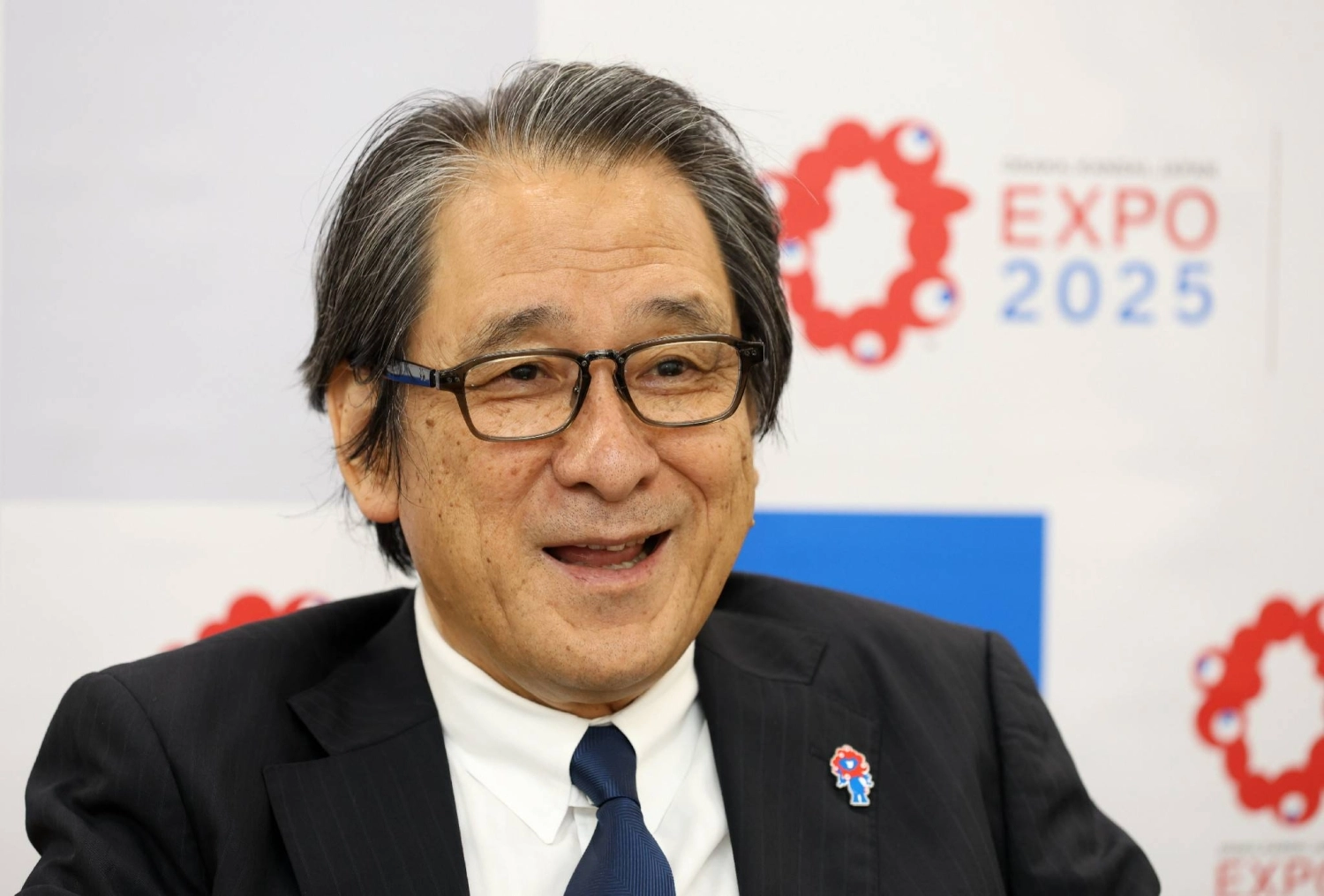
Osaka Expo Secretary-General Hiroyuki Ishige speaks during an interview last week.
| JIJI
“Especially for the local community, successfully completing such a major event is a tremendous source of confidence and pride,” Osaka Expo Secretary-General Hiroyuki Ishige said during a news conference last week.
“I believe this achievement could have a significant impact not only on future economic activities but on various other endeavors as well.”
Highs and lows
When the expo closes its gates for good on Monday night, it will be cause for celebration — and perhaps a big sigh of relief — on the part of organizers that the 184-day mega-event went off without major incident.
But that’s not to say that there weren’t issues.
After a run-up marked by apathy, the expo swung open its doors on Yumeshima island on April 13 and organizers soon found they had the opposite problem on their hands.
Despite a rain-hit opening day, word-of-mouth began to spread and by June the expo was welcoming nearly 150,000 visitors a day.
“All the big events are always criticized at the beginning because people are skeptical and the media reports the negative things,” said Christopher Hecker, director of the German Pavilion. “But at the end, the expo shows many things … (including) that we are standing here today … with so many visitors, showing that the world came together.”
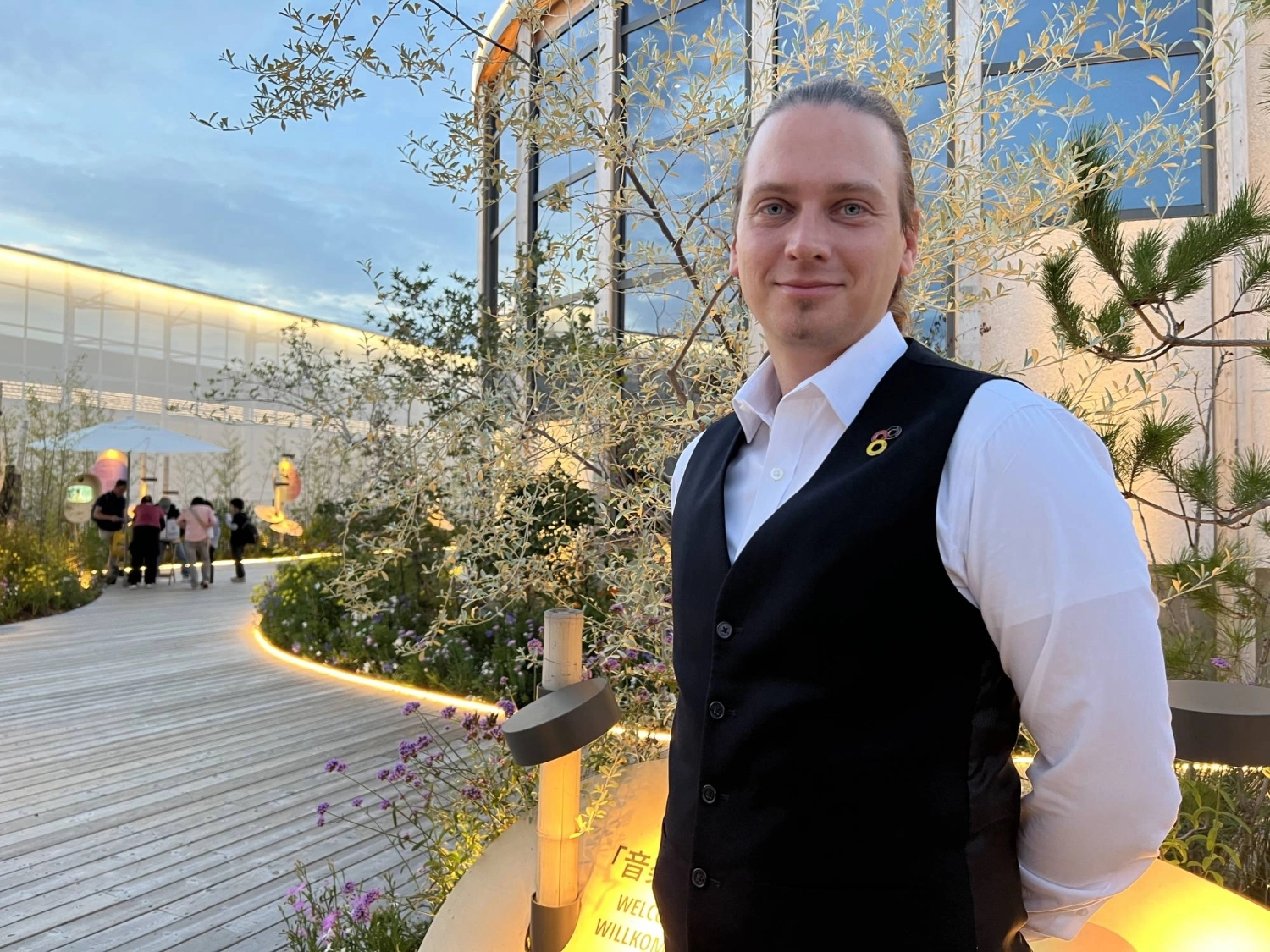
Christopher Hecker, director of the German Pavilion, says he was not surprised that excitement grew for the expo once it opened its doors.
| Tomoko Otake
While a boon for the bottom line, the number of visitors proved problematic for the guest experience and complaints over a confusing reservation system and long lineups at pavilions, bathrooms and food stands became a common occurrence.
Crowds only grew after the summer finally loosened its grip on Japan, and nearly 250,000 people were passing through the gates on a daily basis by the start of October. All told, over 28 million visited.
Despite hourslong wait times and limited capacity at pavilions, guests found ways to enjoy the expo in their own ways.
Hana Hisada and Mao Tanaka, both 27, visited the venue in September, donning handmade costumes and accessories inspired by the strange, multieyed mascot Myaku-Myaku and its distinctive red and blue colors. While it was their first visit, and while they had not actually been inside any pavilions yet, they savored the sweets they had picked from the Tunisian Pavilion, they said.
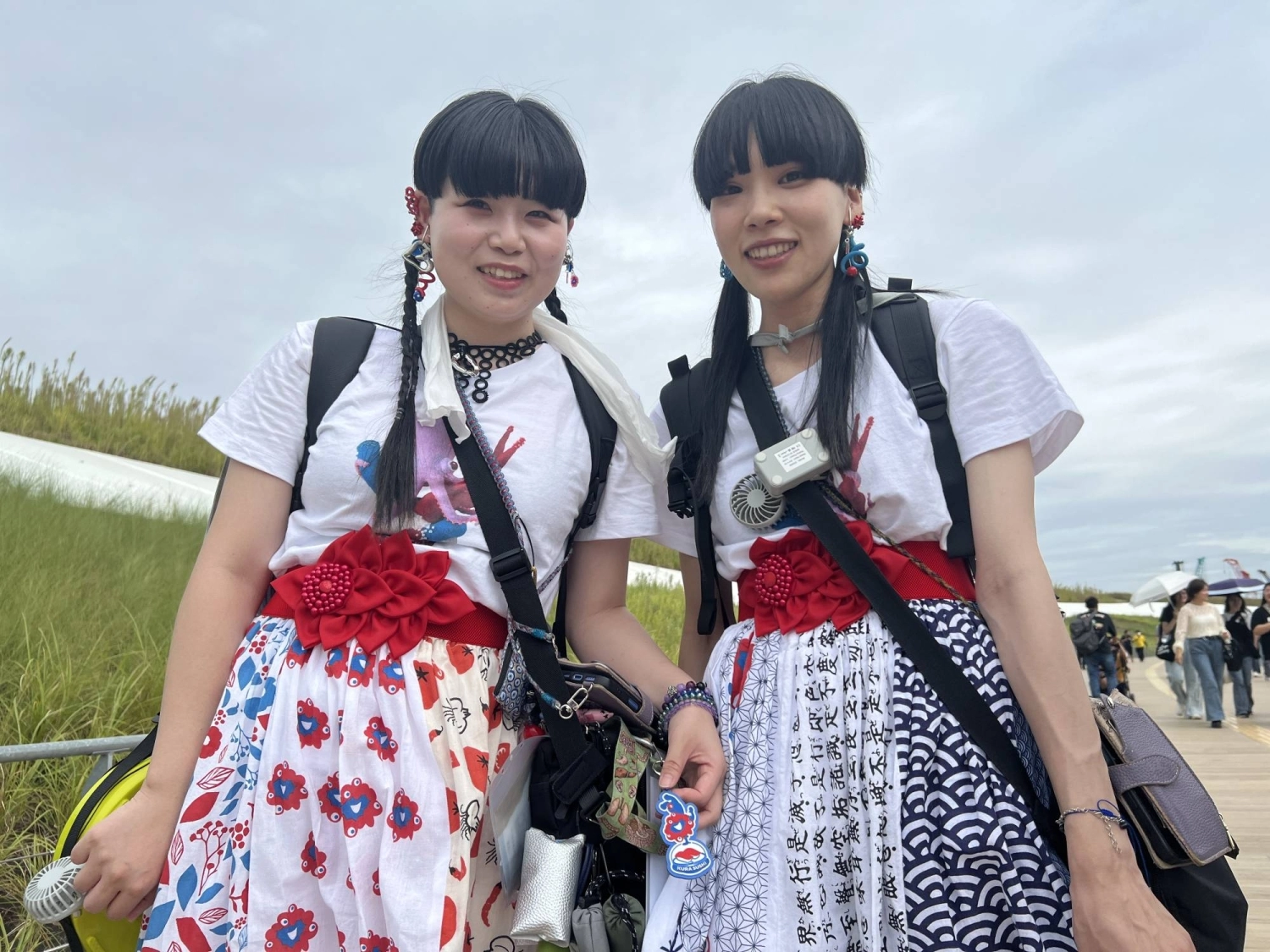
Hana Hisada (left) and Mao Tanaka were among the many visitors to incorporate Osaka Expo mascot Myaku-Myaku into their attire.
| Tomoko Otake
Shinya Takatori, 29, said he became so enthralled with the expo experience when he first visited in April that he bought a season pass. He had now visited 15 times.
In addition to making a personal ranking of all the pavilions he has visited, he walked around the venue in a full-body Myaku-Myaku suit he made by hand.
“I will definitely suffer expo-loss syndrome,” Takatori said. “I think the best part of it for me was that the expo gave me an excuse to get together with old friends and deepen friendships.”
For seven-time visitor Yoko Kumagai, 70, the expo was an opportunity to reconnect with childhood friends and rekindle old memories from the 1970 Osaka Expo.
“I came to the previous expo when I was a third-year student at a junior high school,” she said. “It was just as crowded as this.”
While many of the pavilions featured immersive digital displays, Kumagai said it was the physical objects that she enjoyed most, including some of the cutting-edge machinery on display at the Future City Pavilion.
All told, there were plenty of highlights beyond the pavilions. Nightly drone shows, the “Under the Midnight Rainbow” water show and a projection-mapping display on the walls of the Shining Hat concert hall showed off the capabilities of 21st century tech, while tried-and-tested fireworks displays were a hit throughout the summer.
After poor weather canceled a scheduled performance on opening day, the Air Self-Defense Force’s Blue Impulse aerobatics team returned for two engagements at the event’s midway point.
That wasn’t the last display of aerial might, as Joby Aviation and its domestic airline partner All Nippon Airways gave visitors a preview of what transportation might look like in the near future with daily demonstration flights of its electric air taxi during the expo’s final weeks.
There was plenty to see for those who did manage to get into the most popular pavilions.
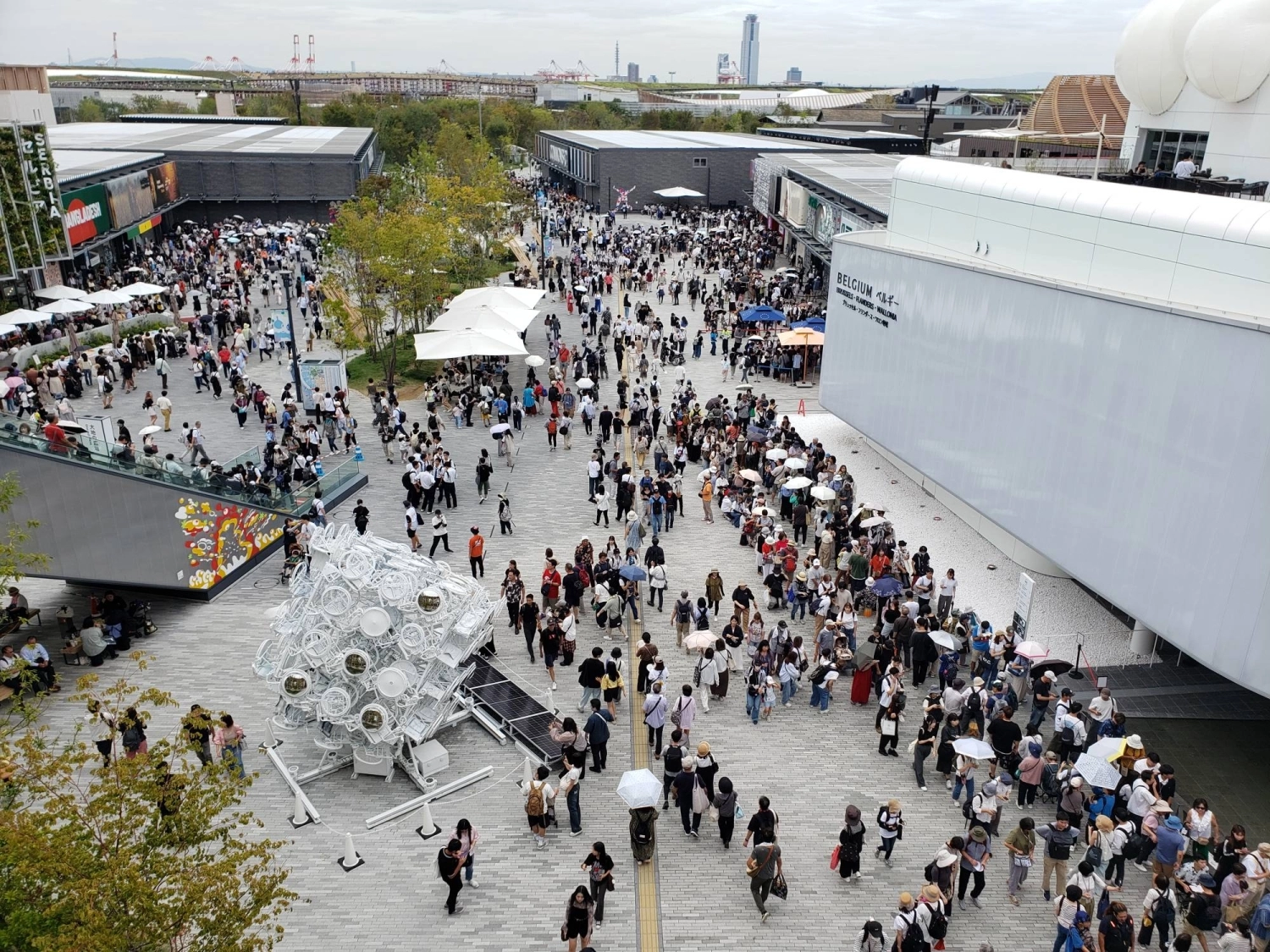
Crowds only grew after the summer finally loosened its grip on Japan, and nearly 250,000 people were passing through the expo gates on a daily basis over the last few weeks of the event.
| Tomoko Otake
The Italian Pavilion put some of that country’s most treasured artworks on display, many of which will be temporarily exhibited at the Osaka City Museum of Fine Arts after the expo. China showed off its growing strength in robotics and space exploration, while Japan’s pavilion showcased new ways of generating power through food waste. And Taiwan, which is not a member of the Bureau International des Expositions, the expo’s governing body, presented its chipmaking prowess as a private exhibitor.
Pasona Group’s Natureverse pavilion also drew rave reviews and featured a heart made from iPS cells and beds that track sleep patterns and other environmental characteristics in order to provide optimized rest.
The surge of visitors — and sales of goods related to Myaku-Myaku, whose image has become ubiquitous in and around the city over the past six months — helped push the expo into the black in an age when so many mega-events end up in the red.
“The ¥23 billion to ¥28 billion profit is certainly welcome, but what makes me happiest is that … everyone is enjoying themselves safely, and nearly 80% of visitors said they’d like to come again,” Osaka Expo Chairman Masakazu Tokura told reporters last week.
Other problems came and went.
About a week before the site opened to visitors, potentially explosive levels of methane leaking from industrial waste buried underground were detected, leaving officials scrambling to increase monitoring and ventilation frequency.
Swarms of flies were a common sight around the Grand Ring in the spring, while high levels of Legionella bacteria in the water plaza forced the temporary suspension of the nightly water show.
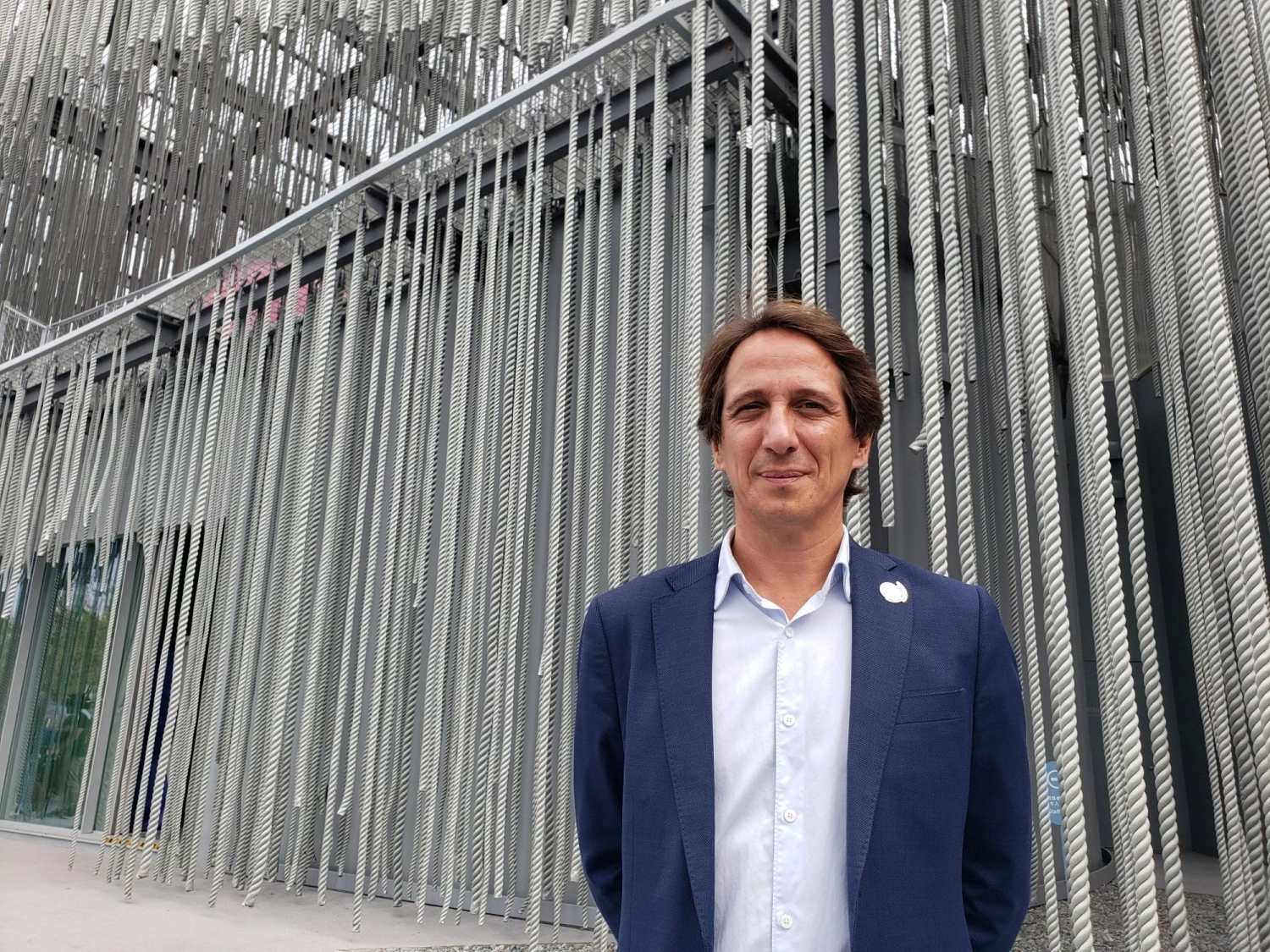
Bernardo Amaral, the director of the Portuguese Pavilion at the Osaka Expo.
| Tomoko Otake
But organizers faced their biggest challenge on Aug. 13, when a cable issue shut down the Chuo Line, the only rail link between the city center and Yumeshima.
About 30,000 visitors were stranded overnight and 36 people were taken to hospital with issues such as headaches and numbness.
For some, that was when the true spirit of the expo shone through.
Bernardo Amaral, the director of the Portuguese Pavilion, decided to keep the pavilion and the restaurant open after the official closing time. The pavilion offered food and beer at a discount and welcomed guests, including a pregnant woman, to rest inside the building.
“Then people start coming by. We put music outside, and people were dancing,” he said. “It was such an organic movement, seeing Japanese people so happy to be here, and for us being able to help them.
“It was almost like a humanitarian situation, but most importantly, people were laughing, people were happy … and not afraid of not knowing what’s going to happen after. I think at that moment you really understood the goodwill of human beings.”

Shinya Takatori wearing a full-body Myaku-Myaku suit he made by hand.
| Tomoko Otake
Sou Fujimoto, the site design producer and architect of the iconic Grand Ring that encircles national pavilions, was thankful for the overwhelmingly positive public response to both the event and the structure. The ¥35 billion ring and its 2,025-meter circumference — recognized as the world’s largest wooden structure by Guinness World Records — is meant to embody the event’s overall message: “unity in diversity.”
In the run-up to the event, the ring had been criticized by some, including noted architects, as being too costly.
“I had received various criticism before the expo started, so I was nervously watching how the guests would react,” Fujimoto told The Japan Times last week. “But everyone appreciated the meaning and the value of the ring and conveyed this to the world. For example, many people went up to the top of the ring to watch the sunset and soak in the beautiful scenery from there. People were reminded of the value of actually experiencing things through the ring.”
The future
The expo may get a passing grade for now, but how its score will look in the decades to come remains a question mark, with the fate of many of the buildings and materials that made up the expo site unclear, including the Grand Ring.
While calls to “save the ring” have intensified in recent days, the official bodies have so far not shown signs of budging from a stance that only a 200-meter stretch — a mere 10% of the entire ring — will be preserved. Apart from some wooden planks earmarked for reuse in public housing being built in earthquake-hit Suzu, Ishikawa Prefecture, most of the components could be turned into wood chips when demolition starts early next year.
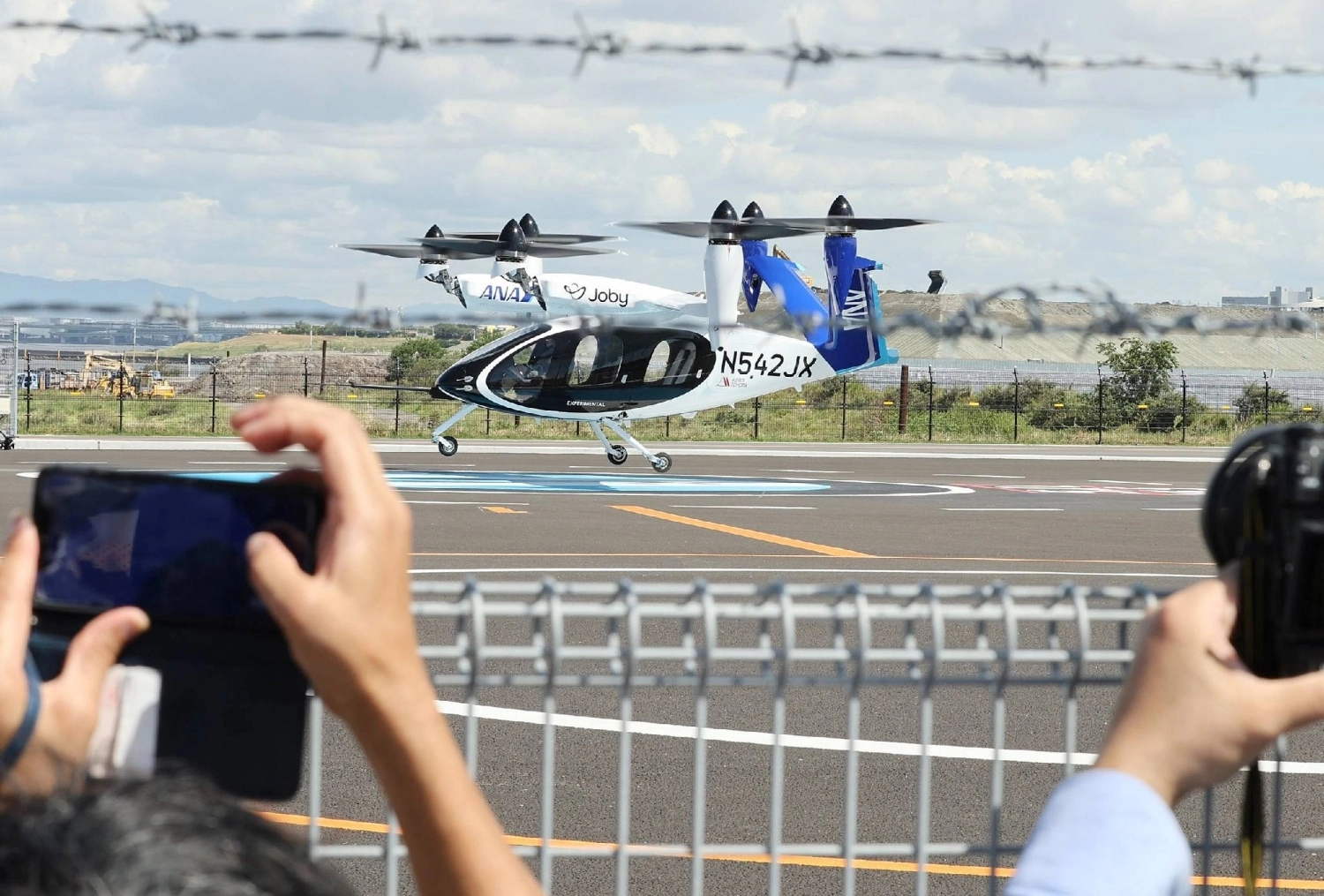
Flying electric taxis were among the technological highlights on display in recent weeks.
| JIJI
Perhaps proponents of keeping the ring can take inspiration from the fact that other iconic expo monuments, such as the Eiffel Tower in Paris and even the Tower of the Sun in nearby Suita, were once slated for demolition.
Ultimately, how Yumeshima’s post-event development plans come together might shape how the 2025 Expo is remembered decades from now.
Like the runup to the expo itself, there’s plenty of opposition.
MGM and Orix are partnering on Japan’s first casino resort. Construction began on Yumeshima in April and is expected to continue until 2030.
The project remains controversial: A survey last November by online marketing firm Seeders Holding showed 32.7% of 1,000 residents from across Japan held negative views about the planned resort, while 30.6% felt positive. The remaining 36.7% were neutral. Gambling addiction is a common concern among the public over the plans.
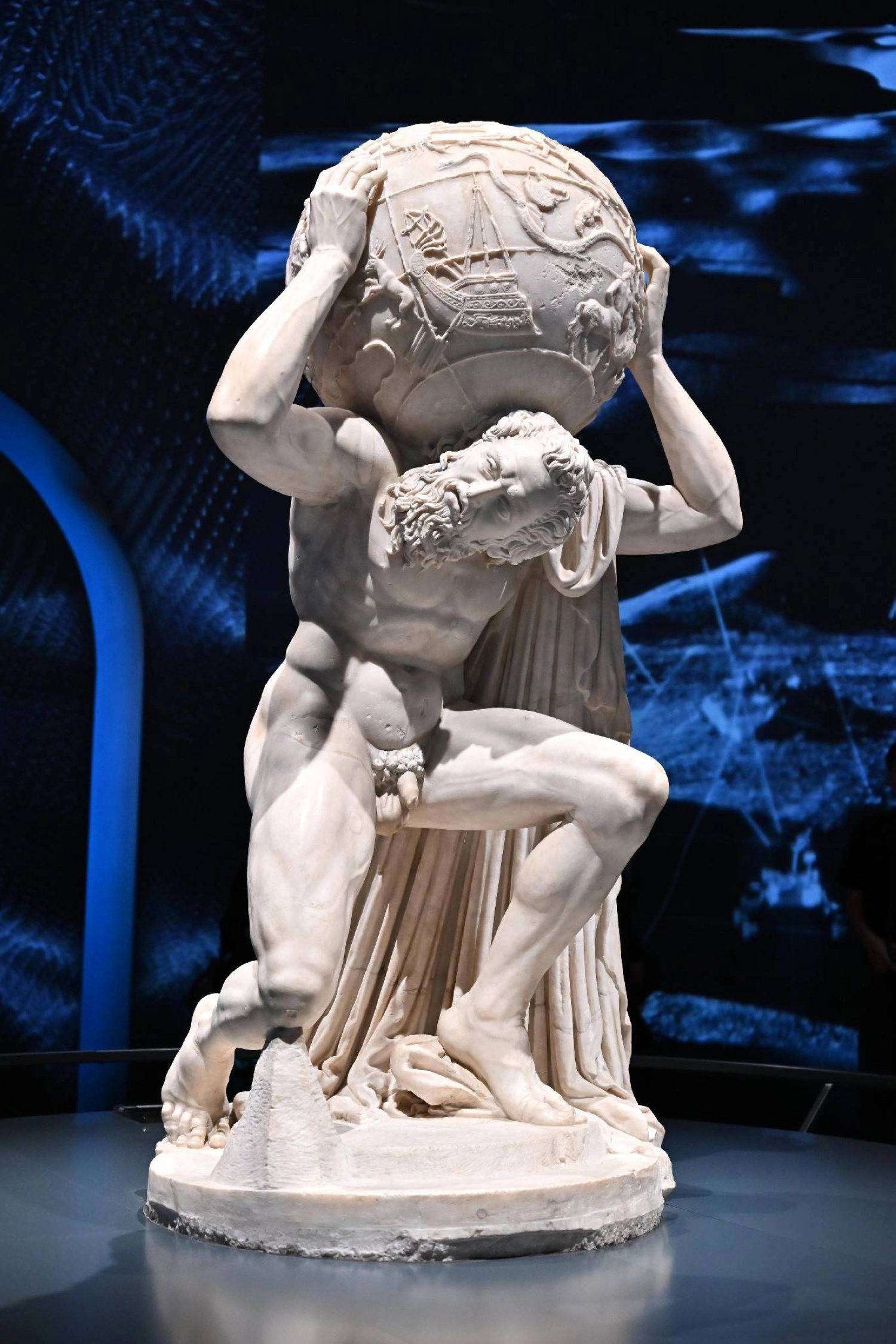
The “Farnese Atlas” sculpture on display at the Italian Pavilion. The iconic work will be temporarily exhibited at the Osaka City Museum of Fine Arts after the expo.
| JIJI
Even those who aren’t opposed to a casino might have a hard time equating the plans for Yumeshima with the efforts to preserve the 1970 event’s legacy through Expo Commemorative Park.
The expo’s theme was “Designing Future Society For Our Lives.” For Kobe University professor Hiroki Ogasawara, an expert in sociology and cultural studies, the casino plan sends a different message.
With the construction of the casino, “the so-called legacy will be slightly different from the legacy of the 1970 Expo,” he said. “Greed and desire, pursuit of economic wealth for only a handful of people.”
Decades from now, “maybe slightly different opinions will emerge” about the expo’s legacy.
The surplus generated by the event gives organizers a chance to flip that script.
Tokura, the Osaka Expo chair, said a committee will be formed over how to use the event’s profits and expressed hope that the money would go toward cementing its legacy.
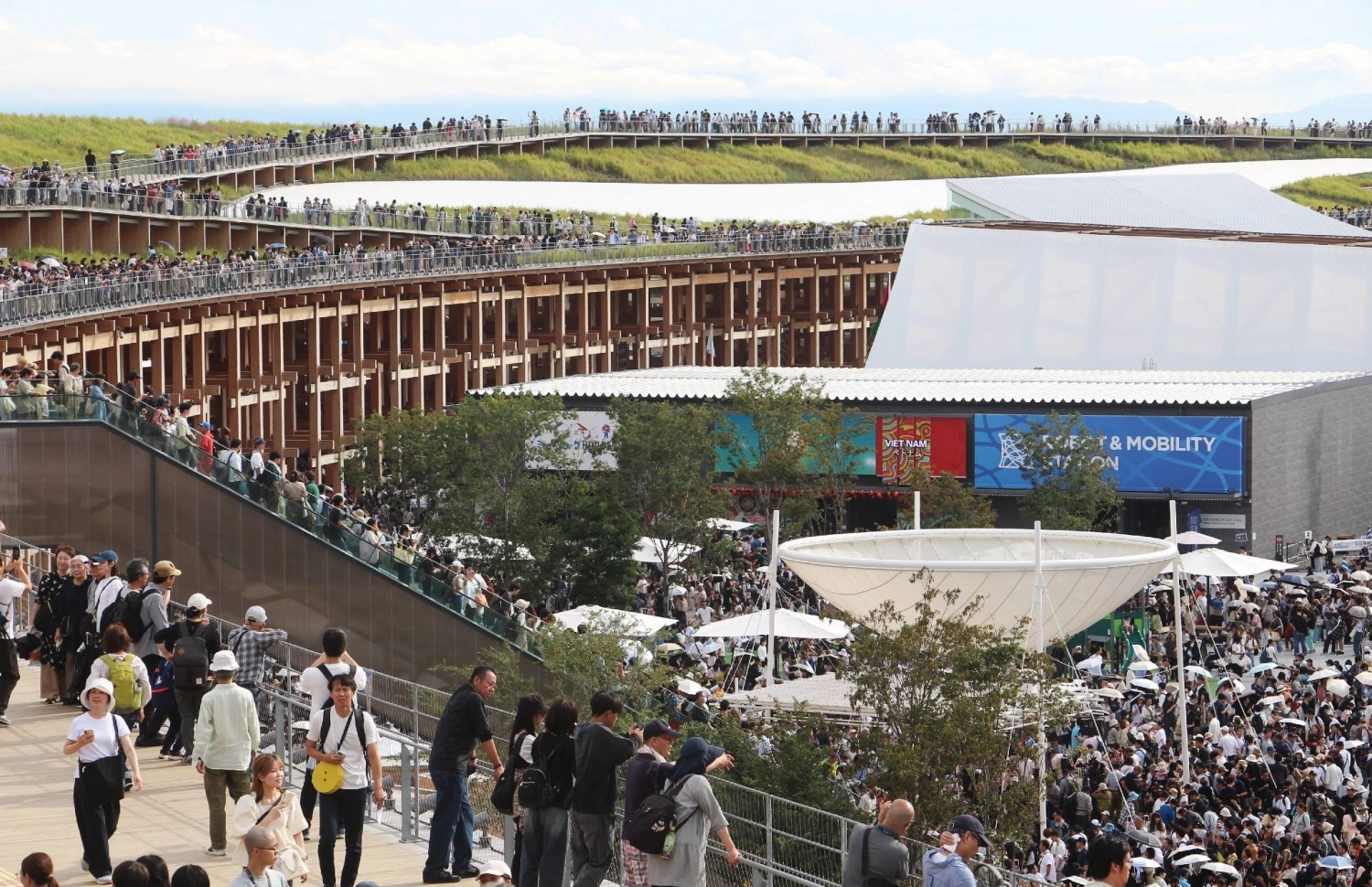
Just 200 meters of the expo’s iconic Grand Ring will be preserved.
| JIJI
“We want to use it for advancing science and technology, and above all, to emphasize the importance of health care and life itself,” he said. “Essentially, it’s about ensuring the values and vision that our Osaka Kansai Expo sought to convey will be passed down to future generations, communicated broadly across generations and shared with countries around the world. That’s how I imagine it will be used.”
Some of the pavilions will be spared demolition. The Pasona group will move the Dutch Pavilion and its Pasona Natureverse pavilion to Awaji Island, where the company’s head office is located. The city of Katano, Osaka Prefecture, has agreed to reuse the Luxembourg Pavilion as a public facility. Organizers say that negotiations are ongoing for the reuse of other facilities.
Beyond tangible assets, organizers and pavilion officials stressed intangible benefits from hosting the event, including people-to-people exchanges, business deals and the sharing of know-how and solutions for some of the world’s biggest crises.
As wars raged in the Middle East and Ukraine and as climate change caused Japan’s hottest ever summer, the expo served as a sort of bubble, within which the world’s biggest problems felt distant and solvable.
“There was a lot of debate about how expos are outdated or unnecessary before the event started,” Fujimoto said. “But as we staged the expo, we experienced firsthand what it was like to connect beyond national borders, and for us to miraculously come together, especially when the world is increasingly divided.
“I think this has been an enormously precious experience.”

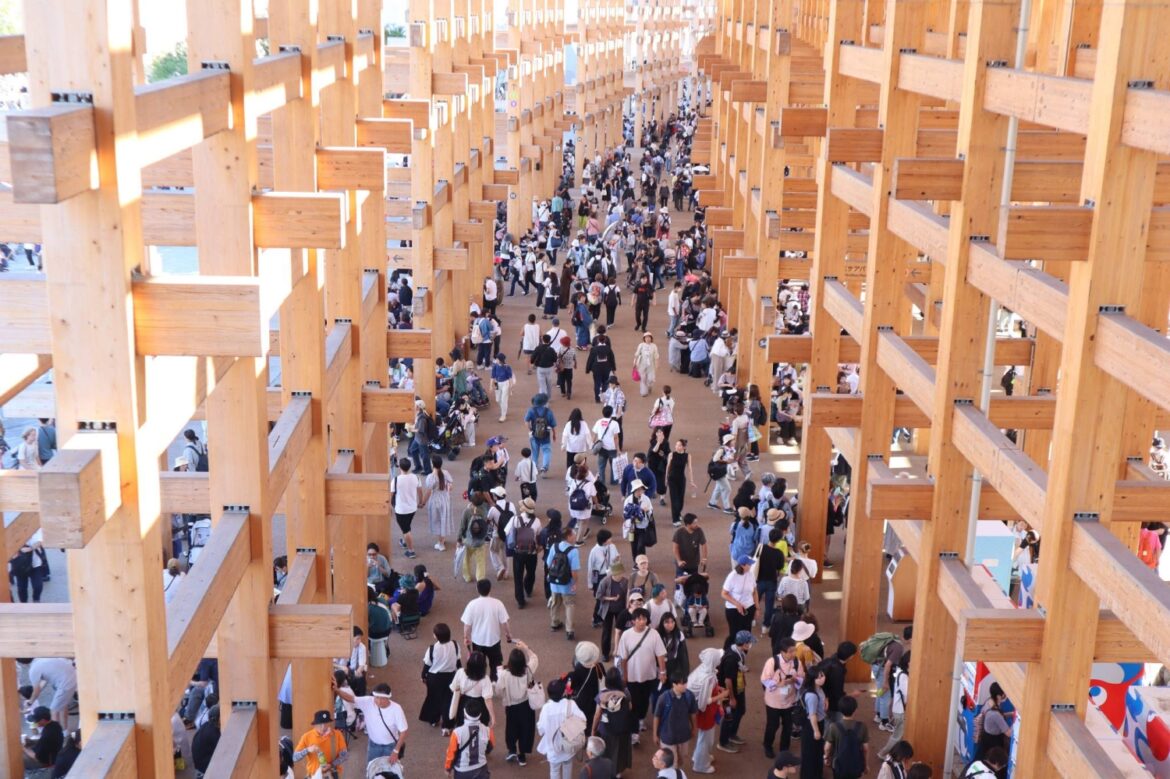
AloJapan.com